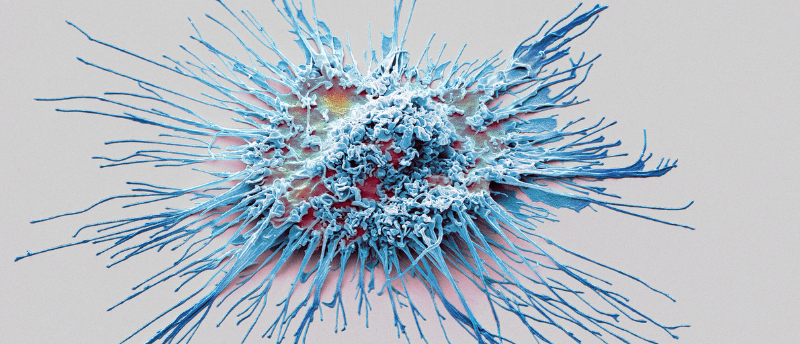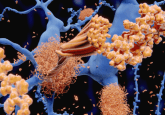What triggers microglia to remove brain debris?

Microglia, immune cells of the brain, have recently gained recognition for their neuroprotective function; now meet the molecule that makes it happen.
Researchers at University of Virginia Health System (VA, USA) have uncovered a molecule that plays an essential role in microglial function. Microglia have been found to clear brain debris, such as amyloid plaques in Alzheimer’s disease (AD) and damaged myelin in multiple sclerosis (MS). The current study demonstrated that when a molecule inside microglia, a kinase called SYK, is depleted, microglia don’t function properly, leading to a buildup of toxic debris and, eventually, neurodegeneration.
Many neurodegenerative diseases are characterized by a buildup of protein in the brain. However, microglia have only recently broken onto the scene of neurodegenerative research after mostly being ignored. It is now thought that microglia are responsible for clearing this toxic debris, which would make microglia an important player in preventing neurodegeneration. But what mobilizes microglia’s neuroprotective activity?
The research team, led by John Lukens, investigated this microglial cleansing process and the molecule responsible for kickstarting it using techniques like flow cytometry and ELISA. Modeling AD in mice, the team found that a deficit in the SYK molecule in microglia led to plaque buildup and memory loss. Subsequently, when this molecule was artificially activated, causing microglial activation, symptoms were reduced.
 Ask the Experts: Alzheimer’s fabrication controversy
Ask the Experts: Alzheimer’s fabrication controversy
We asked Becky Carlyle, Mark Dallas and John Hardy to provide insight into what the 2006 fabrication allegation means for Alzheimer’s disease research, drug development, scientific publication and the public.
In a mouse model of MS, a buildup of damaged myelin was also associated with a lack of SYK. Because myelin is an insulating coating around axons of nerve cells, when it’s damaged, the electrical transmission is slower, leading to movement issues characteristic of MS.
“If boosting SYK activity in microglia can decrease the amount of myelin debris in MS lesions, developing new drugs to target SYK could stop the progression of MS and help to reverse the damage,” suggested Elizabeth Frost, researcher and co-author on this paper. “This is an especially promising option given that most of the currently available drugs for MS treatment dampen adaptive immunity. These immunosuppressive drugs lead to susceptibility to infection and higher risk of potentially fatal side effects like progressive multifocal leukoencephalopathy.”
The hope is that this finding will contribute to future treatments and preventative therapies for AD, MS and other neurodegenerative diseases, allowing doctors to augment the activity of microglia via the upregulation of SYK.
“In our studies, we have discovered a master controller of the cell type and processes that are required to protect the brain from these disorders,” reported John Lukens. “Our work further shows that targeting this novel pathway provides a potent strategy to eliminate the toxic culprits that cause memory loss and impaired motor control in neurodegenerative disease.”





